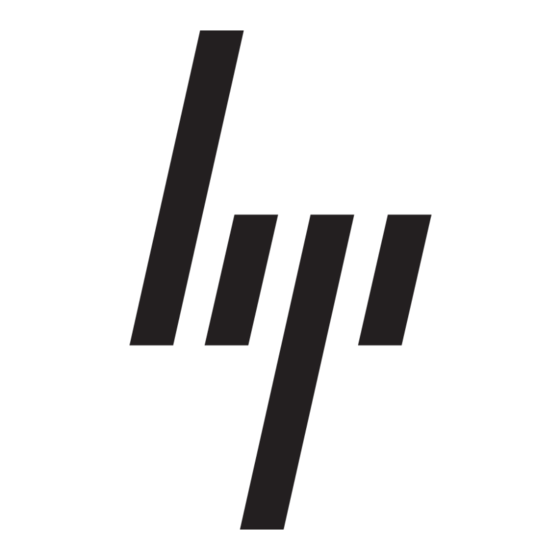The BladeSystem Onboard Administrator with KVM module adds the ability to directly connect the
BladeSystem c7000 enclosure to a keyboard, mouse, monitor, or KVM switch through a VGA port. It
provides approximately a 1.7x performance increase over the basic BladeSystem Onboard
Administrator module and contains a PowerPC 440EPx 400 MHz processor, 1 Gb Ethernet support,
and 512 MB DDR2 memory. With a firmware upgrade on both BladeSystem Onboard Administrator
modules to OA version 2.41 or later, the BladeSystem Onboard Administrator with KVM is
interoperable with the basic BladeSystem Onboard Administrator.
Detecting component insertion and removal
BladeSystem Onboard Administrator provides component control in c-Class enclosures. When a
component is inserted into a bay, the BladeSystem Onboard Administrator immediately recognizes
and identifies the component through presence signals on each bay. If a component is removed from
a bay, the BladeSystem Onboard Administrator deletes the information about that component.
Identifying components
To identify a component, the BladeSystem Onboard Administrator reads a Field-Replaceable Unit
(FRU) Electrically Erasable Programmable Read-Only Memory (EEPROM) that contains specific factory
information about the component such as product name, part number, and serial number. All FRU
EEPROMs in c-Class enclosures are always powered, even if the component is turned off, so the
BladeSystem Onboard Administrator can identify the component prior to granting power. For devices
such as fans, power supplies, and Insight Display, the BladeSystem Onboard Administrator reads the
FRU EEPROMs directly. The BladeSystem Onboard Administrator accesses server blade FRU
EEPROMs through their ProLiant Onboard Administrator (iLO 2) management processors.
Server blades contain several FRU EEPROMs: one on the server board that contains server information
and embedded NIC information, and one on each of the installed mezzanine option cards. Server
blade control options include auto login to the ProLiant Onboard Administrator (iLO 2) web interface
and remote server consoles, virtual power control, and boot order control. Server blade control
options also include extensive server hardware information including BIOS and ProLiant Onboard
Administrator (iLO 2) firmware versions, server name, NIC and option card port IDs, and port
mapping. The BladeSystem Onboard Administrator provides easy-to-understand port mapping
information for each of the server blades and interconnect modules in the enclosure.
From the NIC and mezzanine option FRU information, the BladeSystem Onboard Administrator
determines the type of interconnects each server requires. Before granting power to a server blade,
the BladeSystem Onboard Administrator compares this information with the FRU EEPROMs on
installed interconnect modules to check for electronic keying errors. For interconnect modules, the
BladeSystem Onboard Administrator provides virtual power control, dedicated serial consoles, and
management Ethernet connections, based on the specific interconnect features that are included.
Managing power and cooling
The most important Onboard Administrator tasks are power control and thermal management. The
BladeSystem Onboard Administrator can remotely control the power state of all components in c-Class
enclosures. For components in device bays in the front of each enclosure, the BladeSystem Onboard
Administrator communicates with the ProLiant Onboard Administrator (iLO 2) to control servers and
communicates with a microcontroller to control options such as storage blades. A separate
microcontroller controls power to interconnect modules.
Once components are granted power, the BladeSystem Onboard Administrator begins thermal
management with Thermal Logic. The Thermal Logic feature in the c7000 enclosure minimizes fan
subsystem power consumption by reading ―a sea of sensors― located throughout the enclosure.
Thermal Logic adjusts fan speed in the four different cooling zones within the enclosure to minimize
power consumption and maximize cooling efficiency.
6

